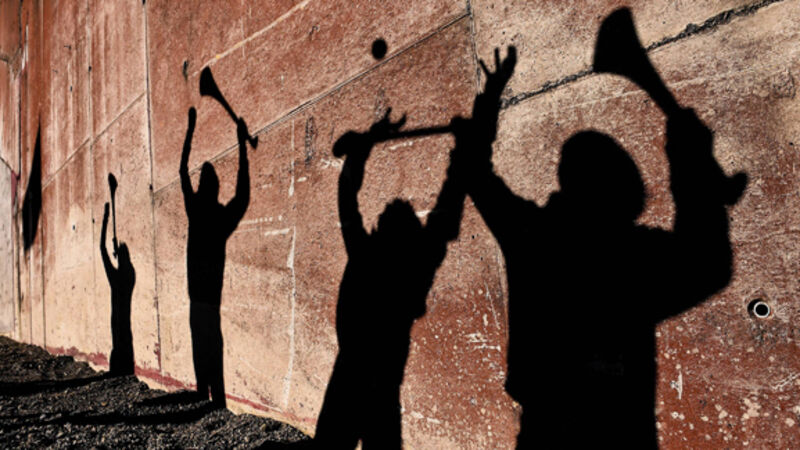Playing rights of all must be respected

Was it simply that it was so out of keeping with the expressed worldview of the Association to insist that every applicant for the position should have a ‘Third level business related qualification (min Level 8 NFQ)’?
Was it that in its elitist elevation of both business and — more precisely — a university education in business, it insulted the abilities of so many people who work for the GAA at every level?
Or is it something more profound than that?
There is a sense that the insistence on a formal business qualification confirmed a view that the GAA hierarchy in Croke Park has simply lost its way and that its priorities are at odds with the great swathe of its members.
But what exactly does that mean?
After all, everybody involved in any meaningful way with the GAA understands that it must make money to fund its operations.
Is it, therefore, a question of balance, of working out what precisely is the right amount of commercial activity, of working out how much money is enough and, ultimately, is the most important question to ask is to what purpose commercial activity it is undertaken?
And, following logically on from that, is it then simply that a recalibration in this area will salve all wounds and that what is merely needed for the GAA is a refined version of what it is currently doing?
By this reading, what will work for the GAA is to pull back a little from its embrace of the corporate world and from its apparently slavish imitation of too many of the trappings of modern professional sports (without actually paying its players).
There are three essential difficulties with this. The first is that there is no agreement on whether this is an accurate diagnosis of what is wrong.
The second is that, even if it were agreed to be a correct diagnosis, it is not obvious how exactly the GAA might fix the problem.
And the third difficulty is that there is no obvious example from anywhere in the world of an organisation which has pushed into the corporative world and embarked on a trend towards professionalism before successfully reversing from it.
There is much about the GAA that is unique — but there is also much about it that is the stuff of sports organisations all across the world. There is a tension between these two things and it is a tension that is not easily resolved.
For all of its history, the GAA has reflected broader trends in sports. Its very foundation was an imitation of the establishment in Ireland of clubs and associations for the playing of soccer and rugby, to name just two sports with a developing global presence.
And since then the GAA has followed global trends — at a greater or lesser speed — in respect of matters such as the building of stadiums, the broadcast of its games, its use of sponsorship and so on.
Where the history of the GAA is unique lies in the peculiar politics of Ireland which saw the foundation of the association also defined by a nationalist reaction against the British Empire.
That nationalism has (ebbing and flowing, meaning much to some and nothing at all to others) remained a constant in subsequent decades.
What is also unique is the territorial organisation of the GAA and the absence of a transfer system (in the manner of professional sports). Indeed, this connection with place — much more than its nationalism — is the great defining characteristic of the GAA outside of its games.
It is love of place that helps inspire generations of volunteers to commit their time and labour. It binds people into an area, helps cultivate a sense of belonging and, on occasion, lends a greater meaning to the present.
It is often written that it is this, the GAA’s sense of the local, that is its bedrock, the thing that sits at the core of what makes it such a potent force in Irish social life.
And this is true — but it is not enough of a truth to explain the full force of the GAA’s historical success. Also crucial to the success of the GAA was establishing a framework of championship competitions — first between clubs and then between counties — that extended across the island. This was a national framework which every club and every county could aspire to compete in.
Finally, the potency of the GAA has been completed by its most important element — the sheer pleasure of its games. This is a pleasure which derives in the first instance for the joy of playing football and hurling and one which is complemented by the joy of watching those games. The pleasure of play should not be underestimated.
The danger for the GAA at the moment is that those three elements are under threat.
Firstly, the collapse in playing numbers in certain rural clubs has led to amalgamations and, as has been acknowledged in a recent document produced by Laois GAA, will most likely lead to rural clubs having to disband.
This is something that goes way beyond the usual rise and fall of clubs in rural areas — it is instead the product of long-running societal patterns.
For people who have invested so much of their lives in their clubs — and for people who depend on their GAA for the pleasure it brings — this is a devastating prospect.
Meanwhile, in urban areas the strains on finding grounds leaves too many clubs without a proper place to play. The great example of this is Kevins GAA Club in Dublin’s north inner city which remains squeezed by people (including those working for the state) who cannot seem to understand why it matters that inner city children are as deserving of proper recreational space as those who live in suburbs or the countryside.
Secondly, it is now emphatically not the case that the framework of competition within the GAA extends to all of its units the prospect of competitive engagement. Does anybody really believe that every county genuinely aspires to reaching an elite level of competition?
A great example of this is Offaly. As recently as 1998 Offaly’s hurlers won the All-Ireland senior hurling championship and its footballers won the National Football League.
This was a double that crowned three decades of prosperity which saw the county win four All-Ireland senior hurling titles, three All-Ireland senior football titles and become the first county to have an All-Star award bestowed on at least one of its players in every position on both the football and hurling teams.
And yet the club fixtures plan for the year in Offaly is predicated on the county not making the Super 8 in football and not competing in the later stages of the hurling championship.
That both of those scenarios are highly unlikely is precisely the point. This year, the disconnect between those who are contenders and those who are not will never have been greater. More than that, the system as now designed will ensure that this disconnect can only worsen. And in the case of Offaly that is despite the fact that the county’s senior football team was scheduled to train some 42 times between the 19th of October and Christmas Day.
Thirdly, in respect of a love of play, it should be said that no sporting organisation in the country comes close to the GAA in its success in providing games for children. It is the GAA at its very best and nowhere is the sheer pleasure of play more apparent.
But, equally, no sports organisation treats the bulk of its adult players with such contempt as the GAA has done in recent years.
Nothing can destroy a love of playing more quickly than being denied the prospect of meaningful play. The depth of anger and frustration as evidenced by the membership of the Club Players’ Association lays bare this truth.
Essentially, it is a simple fact there has been an abject failure to provide a proper calendar of play for non-county players over recent years in too many counties.
And, on top of that, county players are burdened with a structure where they play too many matches when the weather is at its worst, and train and train and train to play poorly scheduled championship matches in a neverending season.
And then they rejoin their clubs to lash through a whole load of club championship matches which — in the worst instances — are organised in the manner of a blitz.
But too many of the vested interests remains unchecked — is there any prospect that the power of provincial councils to act as they do could be challenged, for example? Or is that something that requires a level of administrative will that is simply too much to ask for?
And so it is that the GAA, an association with superb facilities, thrilling games, brilliant players, thousands of committed members, finds itself viewed by people within its own ranks (people who love the Association and have spent a lifetime in its service) as having lost its way and of being now skewed to the interests of an elite few.
Too many people across the GAA think like that for their words to be dismissed as those of cranks, or merchants of doom, or attention-seekers.
How has this happened? How has an organisation, whose leadership is celebrated time and time again for its quality and its general judgement, allowed or facilitated or helped to create such an impasse?
When you strip it all down, the rise of the GAA’s corporate involvements, the Sky deal, the capitulation to the GPA, and so on, are the symptoms rather than the cause.
What is really at issue here is the entrenching of a false divide between county and club. This manifests itself most obviously as a supposed chasm between the ‘elite athletes’ of the inter-county scene and the ‘ordinary club player’.
Properly addressing this issue offers the prospect — as a first step admittedly — to finding a way of constructing a functioning Association that can meet the challenges it now faces and set it on a sustainable path for the coming years.
That there can be obvious differences between the way county players and club players train and play has come to be understood as meaning that their mixing is somehow incompatible.
This is rubbish. Such differences which exist have been exacerbated by decisions taken in recent years and by a vacuum of real leadership.
And this vacuum has been used by vested interests to serve their own ends.
The blame for this is too often placed at the door of inter-county managers. It is true that there is a small collection of inter-county managers who dictate how the affairs of a county are run in any given season. But that they are allowed to do so is a function of the weakness of county boards (as Páraic Duffy made clear this week) and of the dysfunction of a system which convinces people that the separation of county and club is the only way by which a serious county can strive for success.
The great pity in all of this is that there has been no shortage of warnings of what was happening.
A prime example is part two of the report of the Football Review Committee published in December 2013. It may be remembered that part one was published in 2012 and led to changes to the playing rules being accepted at GAA Annual Congress in March 2013 after some fairly acrimonious debate.
In launching part two of the Football Review Committee’s report, its chairman Eugene McGee pointed out that they had conducted a national survey, produced detailed data analyses, and held nationwide meetings and focus groups.
McGee said their focus was competition structures and fixture scheduling and said their ambition was “to address many widely acknowledged deficiencies and generate the kind of debate that is a necessary catalyst for change”.
The proposals that were put forward (for football but many of which could equally have benefitted hurling) were laid out with clarity. And unashamed of setting out its stall, the report included an avowal that “it is the strong belief of the FRC that remedies can be found which satisfactorily address the problems which have been highlighted”.
The underpinning rationale was clear: “That some county boards should be prepared to ignore the well-being of the majority of their playing members in pursuit of glory for their flagship team is not a healthy situation. This needs to be addressed before further damage is done. Unless greater consideration is afforded club players, who form the vast majority of participants, the Association risks losing the goodwill and loyalty of may of these players.”
To address this, the committee proposed that “the period mid-April to early August should see a significant amount of club championship activitiy, with all counties required to have reached the semi-final stages of their intermediate and senior football club championships by the first weekend in August”.
How this was to be achieved also matter: “Clubs should have a minimum of one club championship game in each of the months of May, June and July…”
This — and the playing of a round robin system, rather than straight knockout, was “a change the FRC considers absolutely essential”.
But, as we all know, the GAA has chosen an alternative route — although it first did nothing for three further years before setting out on this year’s experiment.
There was a host of other recommendations in the report. These recommendations included proposals for assisting “less successful counties”, linking league performance to championship seeding, sorting out schools and underage competitions, the international rules series and closed season training regimes.
Some of these proposals were ultimately accepted — notably the replacement of the minor grade with an U17 one.
But the key recommendation on the proper blending of the club and county championships in the construction of a coherent calendar of play was ignored.
The FRC report mooted the prospect that this might be something that would be imposed by Croke Park on counties who proved unwilling or unable to deliver. It believed a voluntary solution was more desirable, but that the very suggestion of imposition should be considered was a clarion call to Croke Park to intervene decisively on behalf of club players.
The GAA hierarchy chose not to do so. The recommendations on a calendar of play were simply ignored. As committee member Tim Healy noted this week: “It was filed under ‘Forget’.’”
The great claim being made for this year’s revised structures is that it is a staging post on the way to the change that is actually needed. Nobody is seriously pretending it represents a sustainable solution.
The hope remains that the incoming director general and the incoming president will move to vindicate the playing rights of all of its players. People have looked for an alternative vision — it is to be found in the Football Committee Review. One does not have to accept all its recommendations to agree with the premises that underpin it.















